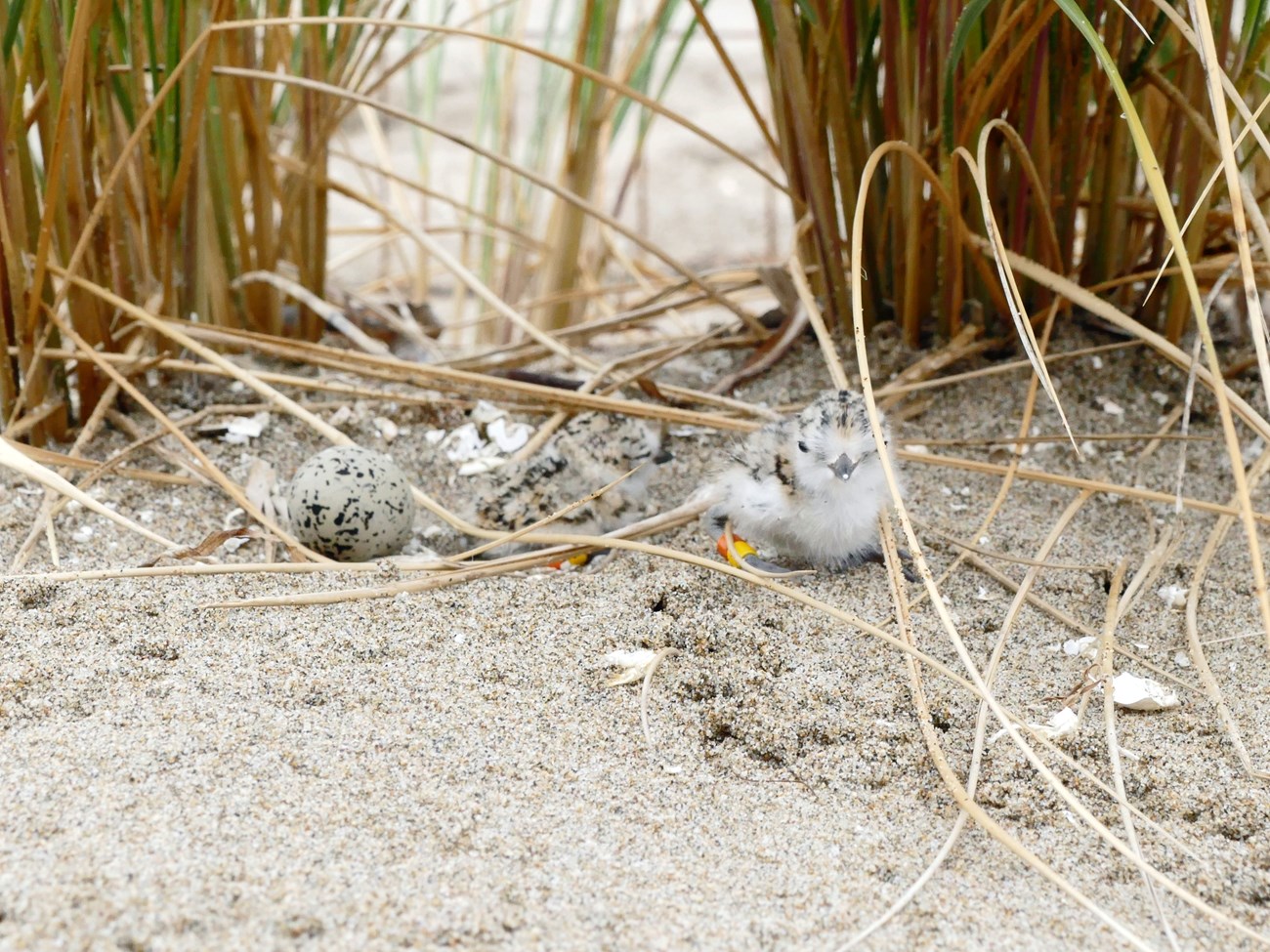Last updated: August 26, 2019
Article
Ravens and El Niño Influencing 2019 Snowy Plover Breeding Season

NPS / Matt Lau
July 2019 - The western snowy plover breeding season in Point Reyes National Seashore is now almost over. The snowy plover monitoring team has observed a total of 34 nests so far and we are expecting a few more. Of these 34 nests, 21 have failed (62%) and nine have hatched (26%); four are still active as of July 22. These numbers will change a little depending on whether the last four nests hatch, and whether any more are found. But for a preliminary comparison, at the end of the 2018 season we observed 50 nests, of which 29 failed (58%) and 21 hatched (42%).
Of the 21 nests that have failed this current season, at least 16 were depredated by common ravens. This represents a record high number of nest failures due to ravens since the National Park Service began tracking the causes of snowy plover nest failures at Point Reyes in 1996. Biologists also track the number of ravens they encounter on Point Reyes beaches during the plover breeding season. Interestingly, they have not seen a noticeable increase in the raven population.
The snowy plover breeding population has declined slightly since the 2018 breeding season. Biologists only observed 19 adults during a week-long window count in May 2019, compared to 45 in 2018. This week-long window count is only an estimate of the total number of plovers breeding in the park; we won’t have a more accurate number until the end of the breeding season. We have observed population declines following an El Niño in the past, so this may be a natural cyclical pattern. It is unknown exactly how the El Niño weather pattern affects snowy plovers. Subsequent breeding seasons after these declines have seen an increase in the number of breeding adults, so we hope this trend occurs during the 2020 season.
Contact Matt Lau to learn more.
